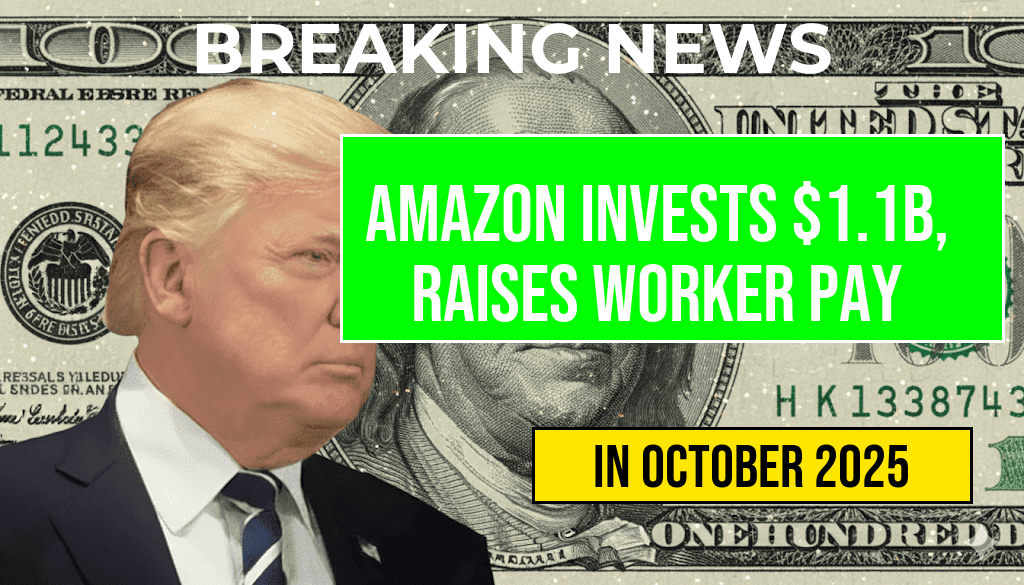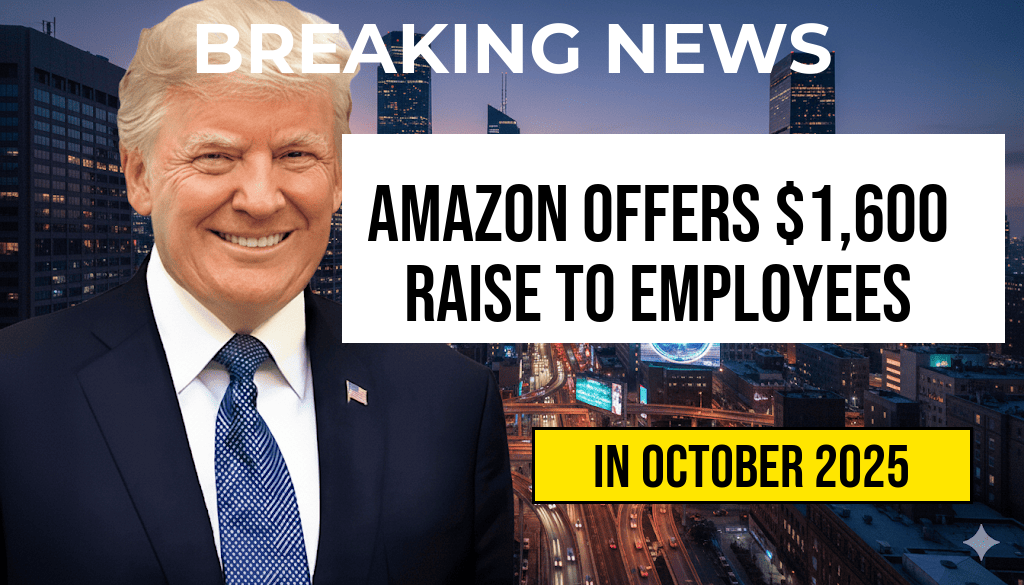Amazon’s recent $1.1 billion investment in its logistics workforce has yielded rapid and tangible results, notably elevating the average pay for fulfillment center employees to over $23 per hour. This substantial financial commitment aims to address rising labor costs and bolster employee retention amid ongoing industry-wide staffing challenges. The move underscores Amazon’s strategy to remain competitive in the fiercely contested e-commerce sector by not only expanding infrastructure but also prioritizing workforce compensation. As a result, thousands of fulfillment workers across multiple regions are experiencing increased earnings, signaling a significant shift in the company’s labor practices and setting a new benchmark within the retail and logistics industry.
Massive Investment Targets Workforce Compensation and Retention
Details of the $1.1 Billion Allocation
- The investment is directed primarily toward wage increases, benefits, and improved working conditions for fulfillment center staff.
- It spans over several months, aiming to provide immediate relief from industry labor shortages and attract new workers.
- Part of Amazon’s broader effort to reduce turnover, which has historically been a challenge in the logistics sector.
Impact on Average Wages
| Period | Average Hourly Pay |
|---|---|
| Before Investment | $21.50 |
| After Investment | $23.10 |
This increase reflects a roughly 7.4% rise in average wages, positioning Amazon’s fulfillment workers among the better-compensated roles in the logistics industry.
Industry Response and Broader Implications
Shifts in Compensation Standards
Amazon’s move is prompting industry observers and competitors to reassess their pay scales. Historically, logistics and warehouse roles have been characterized by modest wages and high turnover. The company’s sizable investment signals a recognition that competitive pay is critical for workforce stability and operational efficiency.
Addressing Workforce Challenges
As e-commerce demand continues to surge, fulfillment centers face increased pressure to recruit and retain experienced staff. Amazon’s wage enhancements, coupled with improved benefits, aim to mitigate labor shortages and reduce reliance on temporary staffing agencies. This approach aligns with broader industry trends emphasizing better worker treatment and sustainable employment practices.
Employee Perspectives and Industry Impact
Worker Satisfaction and Productivity
Initial feedback from fulfillment workers indicates a positive reception to the wage increases, with many citing improved financial security and morale. Industry analysts suggest that higher pay can lead to increased productivity and lower absenteeism, ultimately benefiting Amazon’s operational metrics.
Potential Ripple Effects
Other major players in the logistics and retail sectors, such as Walmart and FedEx, are closely watching Amazon’s strategy. Some are contemplating similar investments to stay competitive, which could lead to a broader upward shift in warehouse employment standards across the United States.
Broader Economic Context
The recent wage increases come amid a tight labor market characterized by low unemployment rates and high demand for warehouse and delivery personnel. According to data from the U.S. Bureau of Labor Statistics, employment in warehousing and storage has expanded significantly over the past year, emphasizing the importance of attractive compensation packages to attract and retain talent.
Potential Challenges
- Rising labor costs could impact profit margins, prompting Amazon to seek efficiencies elsewhere.
- There may be pressure to balance wage increases with automation investments to sustain long-term profitability.
Conclusion
Amazon’s $1.1 billion investment marks a strategic effort to elevate workforce pay and improve operational stability amid a competitive labor landscape. Raising the average hourly wage for fulfillment workers to over $23 sets a new standard in the logistics sector, emphasizing the importance of worker compensation in maintaining supply chain resilience. As the industry adapts to evolving economic and labor market conditions, Amazon’s approach could influence broader employment practices in the e-commerce and logistics domains.
Frequently Asked Questions
What is the main purpose of Amazon’s $1.1 billion investment?
Amazon’s $1.1 billion investment is aimed at increasing pay and benefits for its fulfillment workers, enhancing working conditions, and boosting employee satisfaction across its facilities.
How has Amazon’s investment impacted the average pay of fulfillment workers?
The $1.1 billion investment has successfully raised the average pay for fulfillment workers to over $23 per hour, making their compensation more competitive in the industry.
What factors contributed to Amazon’s decision to increase worker pay?
Factors include industry competition, labor shortages, employee retention challenges, and a strategic effort to improve working conditions and attract talent.
Does this investment affect Amazon’s overall operational costs?
Yes, the $1.1 billion investment increases operational expenses, but Amazon expects that improved employee satisfaction and retention will offset costs through higher productivity and reduced turnover.
Are there any future plans for further investments in employee benefits?
While the article focuses on this specific $1.1 billion investment, Amazon has indicated a continued commitment to enhancing employee benefits and working conditions in the future.






